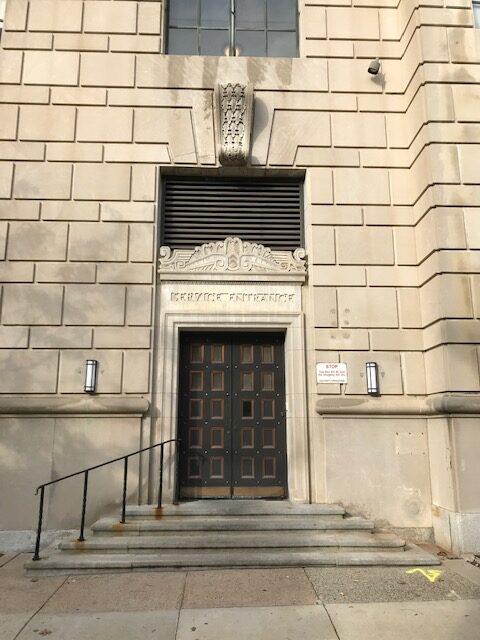I think it was Christopher Alexander who I once heard observe that everything in our surroundings—everything—either raises our spirits or dampens them. It may only be a notch or two, but every thing we look at makes us feel either slightly better or slightly worse. My afternoon walk often takes me past the rear of the Board of Education Building in Philadelphia, and a detail in that building always gives me a lift. It’s the service entrance. I know that’s what it is because the name is elegantly carved into the stone door frame. The building was designed in 1930 in a style sometimes called Moderne, a fusion of Classicism with Art Deco, and the pediment above the doorway reflects this aesthetic. Is there any doubt that a service entrance designed in 2021 would be very different? The pioneers of modernism, who would scoff at the ornamental bracket and the paneled and studded door, bear a heavy responsibility. Not only did they put blinders on designers so that the past became forbidden—and forgotten—territory. They provided permission to mediocre talents to produce and even celebrate mediocrity. The designer of the service entrance that I admire, Irwin Thornton Catharine (1884-1944), was not a celebrated architect; he didn’t attend the Ecole des Beaux-Arts, or even a university (he had a Certificate in Architecture from the Drexel Institute of Art, Science and Industry). But he had a long and deep tradition to draw on, and a toolbox of design skills to deploy. He produced not a utilitarian door surrounded by a skimpy frame, but something solid and weighty, something beautiful, something to raise the spirits. Thank you Irwin.


